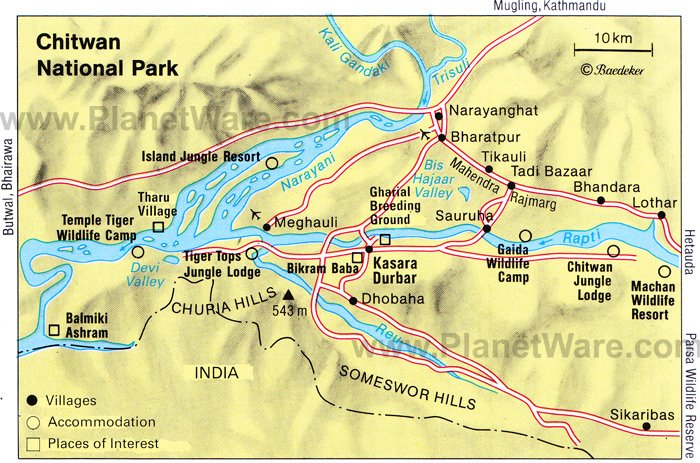5. Trekking in the Annapurna Region
.jpg)
The Annapurna Region is one of the most popular trekking regions in Nepal, with trekking options of a few days to a few weeks. There are three main routes in the Annapurna Region, which intersect and combine in places, but trekkers can opt to do a portion or a variation on the routes. The Annapurna Circuit around Annapurna Mountain takes about 21 days to complete and is incredibly popular with people who have enough time. This route is sometimes called the "Apple Pie Circuit," in reference to the fact that most of the teahouses along the route serve their own version of fried apple pie. The Annapurna Sanctuary nestles between the peaks of Annapurna and takes five days to reach. Muktinath is on the way to Annapurna but has since become a destination in its own right. The Muktinath route runs in the Kali Gandaki Valley on the east flank of Annapurna and takes seven days. North of Muktinath is Mustang, a small region that was only opened up to tourists in 1992. This area is unspoilt and has its own fascinating culture.
In many regards, the Annapurna Region, north of Pokhara, is an ideal walking area. The dramatic contrasts of the Nepalese countryside are especially visible, from the subtropical vegetation of the Pokhara Valley to the dry rain shadow area, with features of the Tibetan plateau. The people and cultures are also very different: facial characteristics, houses, lifestyles, customs, and religion. The Annapurna region was declared a protected area in 1986. The region has a good infrastructure to support the many trekkers that come through this area. The paths are well maintained, and food and lodging are guaranteed.
6 Chitwan National Park
.jpg)
Chitwan National Park is the place to come to experience a different side of Nepal, apart from the hiking and the intrigue of Kathmandu. This is the place for wildlife viewing and a safari-type atmosphere. At an altitude of only 100 meters in some areas, much lower than Kathmandu at 1400 meters, this area has a tropical monsoon climate, usually quite different than what most people expect to find in Nepal. Visitors come here primarily to see wildlife. Tours from the lodges take visitors out into the park, either on foot, or more often, on elephants for close-up views of the animals. The park is home to rhinos, Bengal tigers, leopards, sloth bears, gaur (buffalo) deer, and many other critters. Freshwater dolphins (gangetic) and crocodiles inhabit the rivers and streams but are rarely seen. More than 500 species of birds make Chitwan a paradise for ornithologists.
Chitwan lies southwest of Kathmandu close to the Indian frontier and is included in the UNESCO list of world cultural heritage sites. The best time to visit Chitwan is from October to February. Average temperatures hover about 25°C (77°F), with high humidity, although the mornings can be quite cool. June to September is the monsoon season, with frequent and heavy rain.

Chitwan National Park, Central Nepal Map
7. Trekking in the Langtang Region
.jpg)
The Langtang Region, home to Langtang National Park, is an incredible area for hiking, with some high passes, extensive views, old monasteries, and beautiful mountain scenery with rhododendron forests that bloom during the spring hiking season. It is less developed than some of the other popular trekking areas in Nepal and generally less busy on the trails, despite its close proximity to Kathmandu. There are villages with guesthouses and food all along the route, although somewhat more spread out than in other trekking regions.
This area can be reached easily from Kathmandu by jeep in seven to eight hours, making it extremely convenient, with no flights required. On a clear day, the peak of Langtang Lirung (7,245 meters), which dominates the surrounding area of the same name, is visible from Kathmandu. Trekking lengths and duration range from a few days to a couple of weeks depending on the routing. Some trekkers combine Helambu and Langtang for a longer trek.
8. Swayambhunath (Monkey Temple)
.jpg)
Set on a hilltop to the west of Kathmandu, Swayambhunath is the second most important shrine in the Kathmandu Valley after Boudhanath. Due to the resident monkeys that inhabit parts of the temple, it is more affectionately known as the Monkey Temple. The Swayambhu Stupa, painted with the eyes of the omnipresent god, forms the centerpiece of the temple complex. It was originally a prehistoric cult site, but the temple complex dates to the 5th century. Swayambhu plays a major part in the lives of the Vajrayana Buddhists of Northern Nepal and Tibet, but especially of the Newari Buddhists of the Kathmandu Valley.














